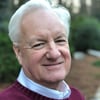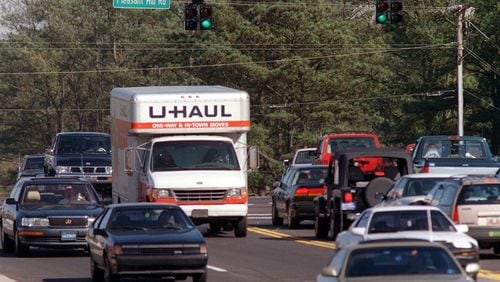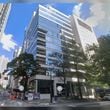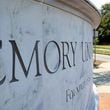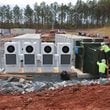Will SunTrust Park be a pitcher’s park or a hitter’s park?
John Schuerholz expects the Braves’ new stadium to treat both pitchers and hitters fairly despite a quirky outfield wall designed to add “character” to the ballpark.
Schuerholz, the Braves' former general manager and former president, and now the team's vice chairman, was on hand for Thursday's media tour of the Cobb County stadium, which opens next year.
An outfield wall of dramatically changing heights — as low as six feet in left field and as high as 16 feet in right field — will be quite different than the Braves and their fans are accustomed to at Turner Field. But on balance, Schuerholz thinks the new stadium “will play pretty similar” to The Ted.
“I like fair ballparks,” said Schuerholz, who was highly involved in designing the SunTrust Park outfield. “If a pitcher makes a mistake, a hitter ought to be able to hit a home run. If (a pitcher) makes a good pitch, he ought to be able to get an out.
“I think Turner Field is a very fair ballpark. This will play fair as well. It just will look different … will just aesthetically look interesting.”
The Atlanta Journal-Constitution previously reported SunTrust Park's outfield dimensions and wall heights. While the outfield wall is eight feet, four inches high all the way around at Turner Field, it will be both lower and higher at SunTrust Park — six feet high at the left-field line; eight feet, eight inches high in left-center and center field; and 16 feet high from right-center to the right-field line.
“We did that to build a little more character and uniqueness into our playing facility,” Schuerholz said.
The lower portion of the right-field wall will be padded — as will the full wall in left field and center field — but the upper portion of the right-field wall will be brick, Schuerholz said.
“It’ll be interesting when the right fielder goes back for a ball and the ball is above the pad and he can’t quite catch it with his glove and it bounces off the brick,” he said. “They’re going to have to get used to making that play, too, so that’ll be neat.”
The right-field wall — almost twice as high as Turner Field’s — will be offset by a shorter distance from home plate. At Turner Field, the right-center fence is 390 feet from the plate. But at the new stadium, it will be 375 feet away.
“When we made (SunTrust Park’s) right-field power alley the distance it is for Freddie Freeman and other left-handed power hitters … they were happy,” Schuerholz said. “When we (decided to build) a higher wall … they may have to put a little more loft on the ball to get it out.”
Other outfield dimensions at the new stadium include 335 feet down the left-field line (same as Turner Field), 385 feet to left-center field (compared with 380 feet at Turner), 400 feet to straight-away center field (same as at Turner) and 325 feet down the right-field line (compared with 330 at Turner).
At its deepest points, immediately to the left and right of straight-away center field, the SunTrust Park wall will be 402 feet from the plate.
Schuerholz also discussed the orientation of the ballpark, which is different from Turner Field and most MLB stadiums. From home plate to center field, the Braves’ new stadium faces southeast.
“The way our project lays out with the mixed-use development and how it flows, we just felt it would fit better if we turned it that way,” Schuerholz said. “There are three other major-league parks that have that same orientation: the Texas Rangers’, the Cincinnati Reds’ and the Detroit Tigers’.
“It doesn’t interfere with the playing of the game. … This is different — it’s the opposite of most fields — but it will play fine.”
